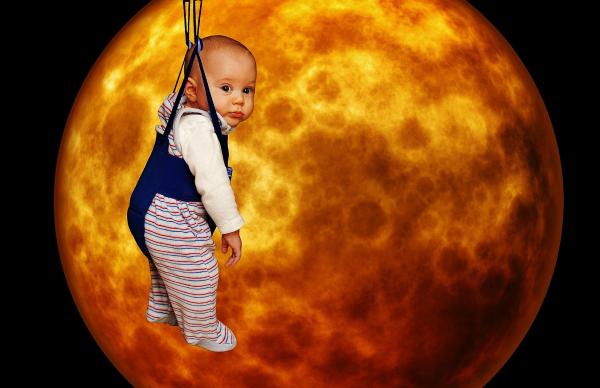If the thought of conceiving in space or the potential of one day giving birth there seem unimaginable and far-fetched notions, then think again. NASA is already studying the possibility. With the Micro-11 mission, they recently launched human and bull sperm specimens to the international space station where astronauts will assist in experiments on the impact of microgravity on sperm’s motility and function (see here).
As the bull samples are necessary for quality control measures, the testing of the human ones will, hopefully, reveal whether they can remain up to their intended task of egg fertilization. Since we know little about reproductive biology in space, let’s start with a little refresher of reproductive biology on Earth.
Believe it or not, fertilization is not as simple as a sperm meeting an egg. There are processes that need to occur to ready the sperm to be optimally mobile, accelerate toward the egg and ultimately be able to make certain cellular adjustments to be able to fuse with it. Prior work demonstrates that with sea urchins, the motility aspect was faster in microgravity but the latter phase that permits penetration and fusion with the egg was suboptimal to nonexistent.
If that’s the case with human sperm, then is it possible to conceive in space?
For many reasons, researching fertility in space is a worthwhile endeavor. For instance, do long-term missions adversely impact reproductive health and promote infertility? Also, it is of great import to understand the physiological changes and processes the body endures under space conditions, for this information will yield dividends in research in a multitude of arenas. Things can be observed while studying the effects of weightlessness on sperm that might be missed in the environment of gravity on Earth. NASA scientists also contend “a successful base on the Moon or Mars may require self-perpetuating colonies of animals and plants.”
As someone who is not a proponent of water birth (1), for example, or the idea of a detailed birth plan erroneously being able to dictate one of the most complex and unpredictable aspects of life (e.g. labor and delivery), it seems wild that there may come a day where the questions expand beyond “will you be delivering at home or in a hospital” to “and will this be a moon birth?” Or, shall I say a literal moon landing! And, with our current culture of oversharing, will conception stories one day include “we will never forget that special trip to outer space when we toured the planets” instead of “he was conceived in an apple orchard.”
NASA’s work is certainly bringing concepts previously believed to be science fiction into the territory of obviously remote, but potentially possible distant science future. Given the radiation issues and many challenges already in view, the end result is definitely an extremely lofty goal. Either way, whether we can or can’t procreate on the moon, the knowledge we will acquire along the journey will be no small step for man, but a giant leap for mankind (to paraphrase Neil Armstrong).
Note(s):
To learn about the risks associated with water birth, review my pieces: Water Birth: To Breathe Or Not To Breathe?, Yet Another Water Birth Goes Awry, Just Say No To Water Birth, Legionnaires' Disease Latest Worry For Baby After Water Birth.




